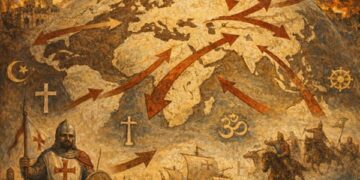By: M Ahmad
The International Day of Non-Violence is observed on 2 October, the birthday of Mahatma Gandhi- also known as Gandhijanti- the leader of the Indian independence movement and pioneer of the philosophy and strategy of non-violence. Born on October 2, 1869, Gandhi for India is ‘Father of the Nation’. A lawyer by profession, he used truth and non-violence as his tools during India’s freedom struggle against British colonial rule. Gandhi was assassinated on January 30, 1948, almost five months after India gained independence, but his ideals of truth and non-violence still remain relevant in the 21st century.
The International Day of Non-Violence aims to spread awareness about the philosophy and strategy of non-violence through education and public awareness. It is observed across the world to spread the message of non-violence and urge the world leaders as well as conflicting parties and ideologies to adopt non violence as the principle way conduct. Be it civil rights or social reforms, Gandhi has been an inspiration for non-violent movements across the world as he remained committed to his belief in non-violence even under the worst circumstances and insurmountable challenges and led India to freedom.
Non-violence is both a principle and a practice. The principle of non-violence affirms the active use of non-coercive and non-aggressive means to create a more peaceful context. It is based on the assumption that justice will eventually prevail, that choices should be made from a place of love rather than hate, that the hurtful action, not the person, should be subdued and that voluntary suffering has value as an important facet of life. It is the personal practice of not causing harm to one’s self and others under every condition. It may come from the belief that hurting people, animals and/or the environment is unnecessary to achieve an outcome and it may refer to a general philosophy of abstention from violence. Non-violence is the personal practice of being harmless to self and others under every condition. Gandhi spread the non-violence through movements and writings. … He taught that one must abstain from violence.
Non-violence has come to be recognized as a powerful strategy for students, communities, disenfranchised groups and whole societies in addressing and transforming conditions. During the 20th century, the successful social movements of Gandhi in India and Martin Luther King, Jr. in the United States led to the public’s realization of completely new dimensions of nonviolent conflict resolution. The goal of nonviolent resistance is not to defeat anyone, but to create friendship and understanding. Instead of destroying the opponent, the nonviolent resister tries “to awaken a sense of moral shame.
“Promotion of non-violence and peace through education and public awareness “ is one of the primary objectives behind the celebration of this day. By observing this day, the United Nations intends to facilitate and secure a culture of peace, tolerance, understanding, and non-violence. On this day, various sessions and events are organized throughout the world to make people aware of Mahatma Gandhi’s strategy and philosophy on non-violence.
Non Violence has been used as an effective tool for political revolution and social change in the modern times. It is a powerful method for challenging and overcoming violence without using violence; for creatively transforming and resolving conflict; and for fostering just and peaceful alternatives. The principles of non-violence reject the use of physical violence. Mahatma Gandhi used non-violence as a constructive tool to revolt against the British Rule in India. Gandhi says that truth and non-violence are the two sides of the same coin and considers ahimsa as the means; and truth as an end. He was a great supporter of peace and believed that the truth and non-violence are the only means through which peace can be gained and problems solved. The Indian independence movement led by Mohandas Gandhi is one of the best known examples of nonviolent struggle.
Non-violence is the greatest force at the disposal of mankind. It is the mightiest weapon devised by ingenuity of man. In order to create a peaceful world, we must learn to practice nonviolence with one another in our day-to-day interactions and avoiding causing harm to anyone or anything in our thoughts, words and deeds. Non-Violence allows us to appreciate diversity, cultivate tolerance and recognize the unity of all beings and respect for all life. Love, the highest love is selfless love. “Non-violence is a powerful and just weapon, which cuts without wounding and ennobles the man who wields it. It is a sword that heals.” Gandhi understood nonviolence from its Sanskrit root “Ahimsa”. Ahimsa is just translated to mean nonviolence in English, but it implies more than just avoidance of physical violence. Ahimsa implies total nonviolence, no physical violence, and no passive violence. Gandhi translates Ahimsa as love.
A non-violent society would be a society where there would not be any discrimination on the basis of class, caste, sex, colour, creed, birthplace etc. If the individualistic concept of ahimsa means compassion, love, toleration and patience, then the socialistic concept of ahimsa means absence of exploitation and discrimination based domination, i.e., presence of a free society.
Delivering a speech at the auditorium of University of Oslo in 1964, Martin Luther King said Gandhi led a long and successful non-violent struggle against British rule in India. He also said that he had adopted Gandhis non-violent method in the campaigns to win civil rights for African-Americans in the US.
“I cannot teach you violence, as I do not myself believe in it. I can only teach you not to bow your heads before anyone even at the cost of your life.”——Mahatma Gandhi
The writer is Incharge, Abhedananda Home-Higher Secondary Institution for Specially-abled Children, Solina, Rambagh, Srinagar, J&K email: abhome78@gmail.com





